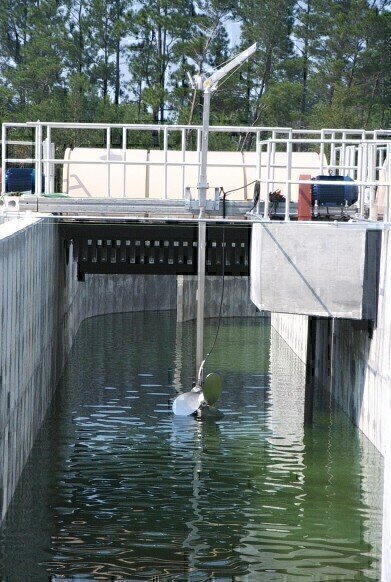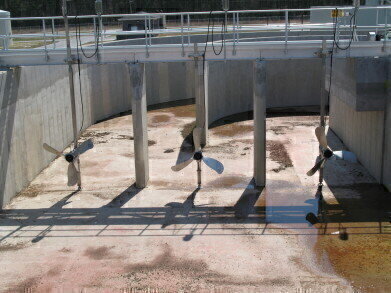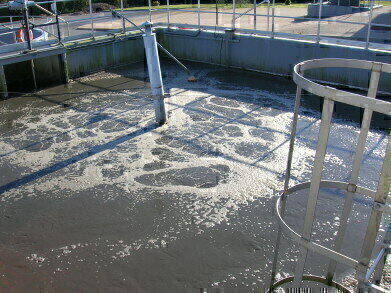Water/Wastewater
Is it Time to Rethink What You Know About Aeration?
Jan 27 2017
If energy-efficient Aeration is not your priority – even when it is well documented that Aeration accounts for a pretty staggering 50-70 per cent of a treatment plant’s power consumption – then please, turn the page.
Historically, and still to this day - the well-worn ‘handbook’ for determining the SCFM (standard cubic feet per minute) for the use of Fine Bubble Diffused Air Systems in an Activated Sludge Process says something along the lines of:
Calculate the air flow required for the oxygen demand.
Then, calculate the air flow required for mixing.
Use the greater of those two numbers to size your blower. That’s it!
But, according to two companies with more than 170 years’ experience between them, it may be time to tear up that handbook, or with more and more treatment plants now on a path towards becoming energy neutral, at least bring it into the 21st century.
“Traditionally, plug-flow aeration basins for the nitrification of activated sludge were not built with submersible mixers in mind”, says Landia (established 1933) Director Soren Rasmussen, “but continuing to follow ‘the old handbook’ can result all too often in also using equipment such as a blower that is way over-sized for mixing, which wastes large amounts of energy, especially during the night when loads are so much lower”.
He added: “If that first number in the calculation which asks for the amount of air required for nitrification is greater than the second number for how much air is required for mixing, then fine. But if that second number is greater than the first, then there is an opportunity for power savings. Air flow through diffusers works great for oxygen transfer, but it’s terribly inefficient for mixing. Instead it’s time to bring in a submersible mechanical mixer, which can keep solids in suspension with just a fraction of the horse power that the blower would consume. The use of submersible mixers in a plug-flow aeration basin will further enable the plant to reduce aeration during low-load periods (summer/winter or night time), without losing mixing in the tank”.
For many, optimizing the all-important process will naturally outrank energy efficiency concerns; even though up to a staggering 25 per cent of a whole city’s total energy use can be consumed by aeration at its treatment plants. However, new grants, EPA funding options and Energy Savings Performance Contracts (ESPCs) should help incentivize the opening to make significant, guaranteed savings, especially as federal agencies can procure energy savings and facility improvements with no up-front capital costs.
‘Energy Savings too in Oxidation Ditches’
One company that also uses submersible mixers to actively help its customers reduce their aeration-led energy bills without compromising on their process is Lakeside Equipment Corporation (established 1928), who back in 1964, first introduced the ‘oxidation ditch process’ to the United States.
Vice President, Warren Kersten says: “To optimize the process for oxidation ditches and save energy, we use rotor aerators, supplemented by Landia’s submersible mixers. During the aerobic phase we have the mixers switched off, but then later when we switch them on, we turn the rotors off so as not to add oxygen”.
In more recent Aeration handbooks, you’ll find all sorts of advice on energy efficiency, largely about controls and speeds, including the use of high-speed Turbo blower systems and air-bearing technology to efficiently produce air flow, but as Warren Kersten continues, the introduction of a mixer – designed for purpose - can play a vital processing and economic role.
“The mixers are put into operation purely for mixing, which unlike other equipment is truly optimized to keep solids in suspension and prevent the tank from going septic. For blowers, variable speed drives may help reduce the amount of power being used, but at the end of the day, a blower is designed to add oxygen, not for mixing. They’re not dual-purpose. We’ve created a cycle so that when the DO (Dissolved Oxygen) drops below 0.5ppm, the bacteria switch from using the free O2 provided by the rotors to attacking the nitrate molecule to obtain their oxygen. We then switch the rotors back on. It enhances the process, and has the added bonus of reducing energy costs”.
Energy savings achieved with this Cyclic Aerobic/Anoxic operation using Lakeside Magna Rotors during the aerobic phase and Landia mixers during the anoxic phase will, according to Kersten, reduce oxygen requirements by around 27 percent. This saves considerable power costs over the typical 20-year life of the project. Based on a 1 MGD plant, using the national average of 10.12 cents per kilowatt hour, this can reduce energy costs by approximately $18,000 per year.
For both oxidation ditches and plug-flow aeration basins, most treatment plants prefer to work with DO levels of activated sludge from 0.5ppm, even up to 2ppm, Rasmussen and Kersten agree that anything above that, be it 3, 4 or 5ppm is simply more aeration than required – and a waste of energy.
In addition to wasting energy, too much dissolved oxygen can cause an upset in anaerobic and/or anoxic selectors by having a high DO in the return activated sludge or mixed liquor recycle. It can also allow certain filamentous organisms to flourish that reduce the effectiveness of the final clarifiers due to a higher settled sludge volume and sludge volume index.
The DO level acts as a buffer, giving the bacteria just enough to work with, but there is really no logic in anything over 2ppm. Too much oxygen may inhibit the bacteria where nitrates are used for the O2 source, so you won’t achieve denitrification. This could mean having to add another carbon source, such as methanol, which further adds to costs and labor.
‘Substantial off-peak savings with submersible mixers’
Landia’s Soren Rasmussen added:
“On capital costs, adding 1 or 2 mixers should reduce the number of operating blowers. At the appropriate times, especially at night, switching off two 50 HP blowers for two 10 HP mixers creates savings that easily runs into tens or hundreds of thousands of dollars – and much better mixing is achieved. To bring about the best possible conditions for the process, you must have enough liquid velocity to adequately mix the reactor biomass. Initially, mixers mean more capital costs, but energy savings make the return on investment (ROI) very short indeed.
If you’ve decided to address those perhaps unnecessarily high energy costs and enhance your plant’s activated sludge process with a mixer, then Soren Rasmussen’s advice is to look for a low speed mixer with a stainless steel propeller.
“With low speed, a mixer will gently mix the sludge without causing floc shear, whereas the shearing by a high speed mixer will disrupt and damage the process”, he says. “Also, the initial capital cost of a mixer with a stainless steel propeller shouldn’t be a deterrent because it has such a long lifetime. Recently we’ve been replacing motors that have come to the end of their natural life, but can still use the propellers after 20 or so years in an oxidation ditch because there’s absolutely nothing wrong with them. So when a plant undergoes an upgrade, reusing our mixers’ original propellers represents a big reduction in capital costs for customers. Together with energy savings from using much less horse power, we can help treatment plants on their way to becoming far more sustainable and ultimately, energy-neutral”.
Events
May 05 2024 Seville, Spain
May 13 2024 Munich, Germany
May 23 2024 Beijing, China
May 23 2024 Beijing, China
Jun 10 2024 Algiers, Algeria















